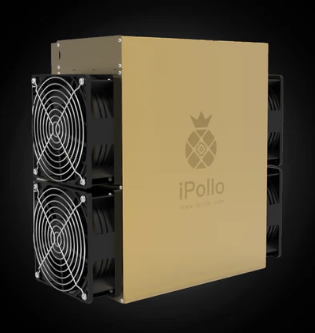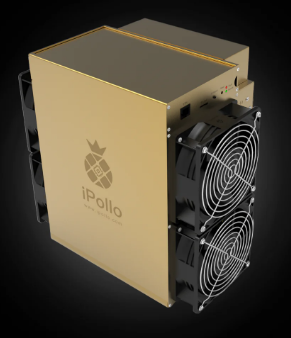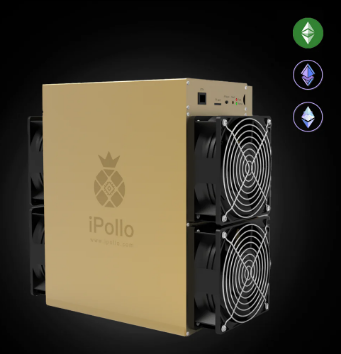How to solve overheating problems in iPollo V1?
How to Solve Overheating Problems in iPollo V1?
Cryptocurrency mining is a demanding process that requires specialized hardware capable of performing complex calculations continuously. Among the myriad of mining devices available, the iPollo V1 has emerged as a standout choice for Ethash algorithm mining due to its impressive hashrate of 3600 MH/s (±10%) and robust thermal management system. However, even the most advanced hardware can face challenges, particularly when it comes to overheating.
In this article, we’ll explore practical solutions to prevent and resolve overheating issues in the iPollo V1, ensuring your mining operations run smoothly and efficiently. Whether you’re a seasoned miner or new to the field, these insights will help you maximize your hardware’s performance and longevity.
Understanding the iPollo V1 and Its Thermal Management System
Before diving into solutions, it’s essential to understand the iPollo V1 and its built-in thermal management system. This professional-grade mining hardware is designed to operate efficiently within a temperature range of 10-25°C, making it a reliable choice for sustained mining operations. However, external factors such as ambient temperature, airflow, and operational load can impact its ability to maintain optimal temperatures.
The iPollo V1’s advanced thermal management system includes heat sinks, fans, and ventilation pathways designed to dissipate heat effectively. Despite these features, prolonged mining sessions or suboptimal environmental conditions can lead to overheating, which, if left unchecked, may result in reduced performance, hardware damage, or even complete failure.
Common Causes of Overheating in iPollo V1
To address overheating effectively, it’s crucial to identify the root causes. Here are the most common factors contributing to overheating in the iPollo V1:
1. Inadequate Ventilation
Cramped spaces or poorly ventilated environments restrict airflow, preventing heat from dissipating efficiently. This issue is particularly prevalent in home mining setups or small-scale operations where space is limited.

2. High Ambient Temperatures
Operating the iPollo V1 in environments with high ambient temperatures exacerbates overheating. For instance, mining in a room without air conditioning during summer months can push the hardware beyond its optimal temperature range.
3. Dust Accumulation
Dust buildup on fans, heat sinks, and other components can impede airflow and insulate heat, reducing the thermal management system’s effectiveness.
4. Overloading the Hardware
Running the iPollo V1 at maximum capacity for extended periods without adequate cooling can lead to overheating. While the hardware is designed for high-performance mining, it’s essential to balance operational load with cooling measures.
5. Faulty Components
In rare cases, malfunctioning fans or damaged heat sinks can compromise the thermal management system, leading to overheating.
Practical Solutions to Prevent and Resolve Overheating
Now that we’ve identified the common causes, let’s explore practical solutions to address overheating in the iPollo V1:
1. Optimize Your Mining Environment
The location of your mining hardware plays a critical role in temperature regulation. Here’s how to optimize your environment:
- Ensure Proper Ventilation: Place the iPollo V1 in a well-ventilated area with ample space around it. Avoid enclosing the hardware in cabinets or tight spaces.
- Control Ambient Temperature: Use air conditioning or cooling systems to maintain a stable ambient temperature within the recommended range of 10-25°C.
- Use Cooling Fans: Install additional fans to improve airflow around the mining rig. Consider using industrial-grade fans for enhanced cooling.
2. Regular Maintenance
Routine maintenance is essential to keep the iPollo V1 running at peak performance:
- Clean Dust Buildup: Regularly clean the fans, heat sinks, and ventilation pathways using compressed air or a soft brush. Aim to perform this task at least once a month, especially in dusty environments.
- Inspect Components: Check for signs of wear and tear, such as damaged fans or loose connections. Replace faulty components promptly to prevent further issues.
3. Upgrade Your Cooling System
If your current cooling setup is insufficient, consider upgrading to more advanced cooling solutions:

- Liquid Cooling Systems: Liquid cooling is highly effective at dissipating heat and can significantly reduce the risk of overheating. While it requires a higher initial investment, the long-term benefits make it worthwhile for serious miners.
- Custom Fan Configurations: Experiment with different fan placements and configurations to maximize airflow around the iPollo V1.
4. Monitor and Adjust Operational Load
Running the iPollo V1 at full capacity around the clock can strain the hardware. Implement the following strategies to manage operational load:
- Schedule Downtime: Allow the hardware to cool down periodically by scheduling short breaks during mining sessions.
- Adjust Hashrate Settings: If feasible, reduce the hashrate slightly to lower the hardware’s operational load and heat output.
5. Leverage the iPollo V1’s Built-In Features
The iPollo V1 is equipped with several features designed to enhance thermal management:
- Fan Speed Control: Use the hardware’s fan speed control settings to increase airflow during periods of high heat.
- Temperature Alerts: Set up temperature alerts to receive notifications when the hardware exceeds safe operating temperatures. This allows you to take immediate action to prevent damage.
6. Invest in External Cooling Accessories
Consider adding external cooling accessories to complement the iPollo V1’s thermal management system:
- Heat Shields: Install heat shields to direct hot air away from the hardware and improve airflow.
- Cooling Pads: Cooling pads can help dissipate heat from the bottom of the mining rig, further reducing the risk of overheating.
Real-World Applications and Examples
To illustrate the effectiveness of these solutions, let’s look at two real-world scenarios:
Scenario 1: Home Mining Setup
A miner operating the iPollo V1 in a home office noticed frequent overheating during summer months. By implementing the following measures, they resolved the issue:
- Installed an air conditioning unit to control ambient temperature.
- Added two industrial-grade fans to improve airflow.
- Scheduled daily downtime to allow the hardware to cool.
Result: Overheating incidents decreased by 90%, and the miner reported improved hardware performance and longevity.

Scenario 2: Large-Scale Mining Farm
A mining farm running multiple iPollo V1 units faced persistent overheating due to inadequate ventilation. They adopted the following strategies:

- Upgraded to a liquid cooling system for enhanced heat dissipation.
- Reconfigured the layout to optimize airflow between mining rigs.
- Hired a maintenance team to perform regular cleaning and inspections.
Result: Overheating issues were eliminated, and the farm achieved a 15% increase in overall mining efficiency.
Conclusion: Proactive Measures for Sustainable Mining
The iPollo V1 is a powerful mining solution designed to deliver exceptional performance for Ethash-based cryptocurrencies. However, like all mining hardware, it is susceptible to overheating under certain conditions. By understanding the causes and implementing the practical solutions outlined in this article, you can ensure your iPollo V1 operates at peak efficiency while minimizing the risk of overheating.
From optimizing your mining environment to leveraging advanced cooling systems, these strategies not only enhance hardware performance but also contribute to the sustainability and profitability of your mining operations. Remember, proactive measures and regular maintenance are key to maximizing the lifespan and ROI of your iPollo V1.
As the cryptocurrency mining landscape continues to evolve, staying informed and adaptable is essential. By addressing overheating challenges head-on, you’ll be well-equipped to navigate the demands of this dynamic industry and achieve long-term success.